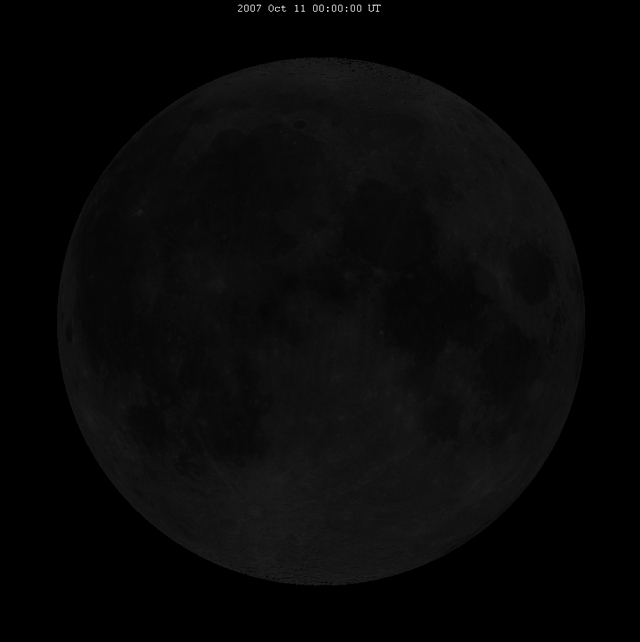Lunar Libration
 The Moon is locked with the Earth, which means that we always see the same side of the Moon. You would think that this meant that we could only see 50% of the Moon's surface, but we can see slightly more from Earth.
The Moon is locked with the Earth, which means that we always see the same side of the Moon. You would think that this meant that we could only see 50% of the Moon's surface, but we can see slightly more from Earth.
We say that the Moon has a libration. Over a lunar month, the Moon wobbles slightly in the night sky. The wobble is most obvious if you take a picture every night and then stitch them together into a video.
It moves both up and down and side to side. The movement up and down (in latitude) is due to the tilt of the Moon's axis. Just like the Earth is tilted by over 20 degrees on its axis with the Sun, giving us seasons, the Moon's axis is also tipped by about 5 degrees compared to the Earth. This tilt means that at some times in the month, we can see past the north pole of the Moon, then later in the month, past the south pole.
Two things cause the movement from side to side. Firstly, the Moon orbits the Earth in an oval or ellipse, not a circle. An oval orbit means the distance between the Earth and the Moon changes during its orbit. When the Moon is closer to the Earth, it moves faster; when it is further away, it moves slower. Because of the tilt of the Moon's axis, this speed change looks like a slight movement from side to side in the east-west direction.
Secondly, the Earth is rotating on its axis. So we see the Moon rise and set, just like the Sun. From our view point, on a spinning Earth, the Moon appears to wobble from side-to-side. It moves west first, then east.
All these effects combine and mean that rather than simply seeing 50% of the surface of the Moon, we can see 59% over the course of the lunar month!

